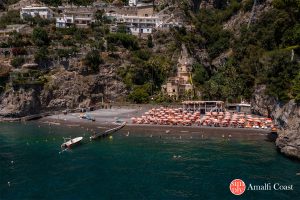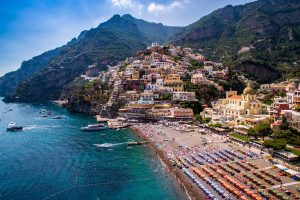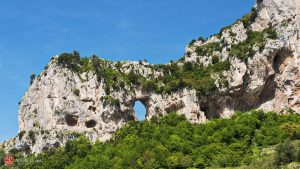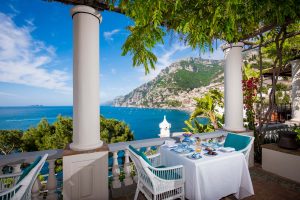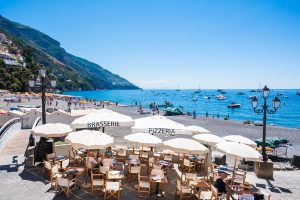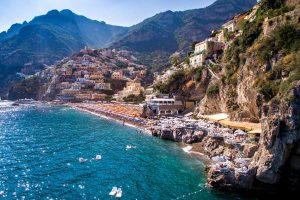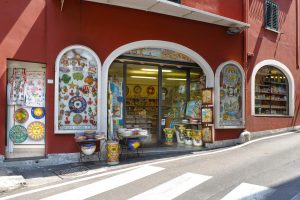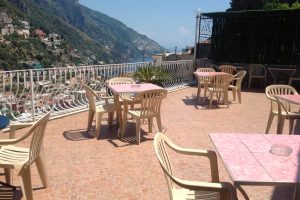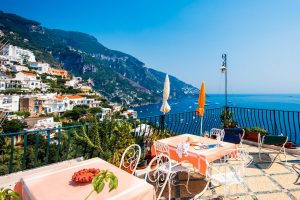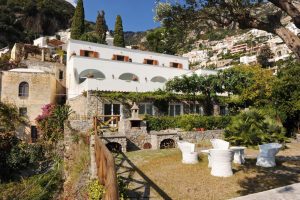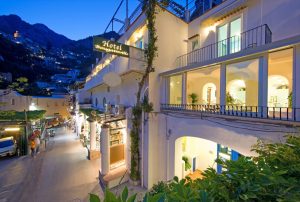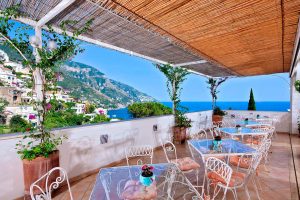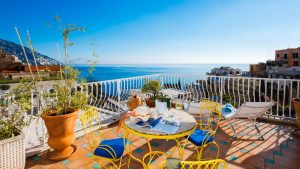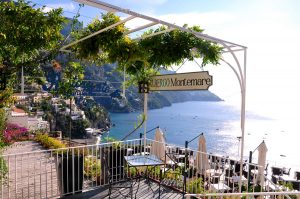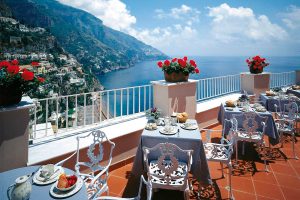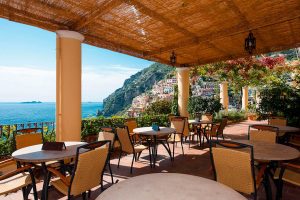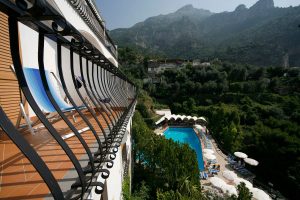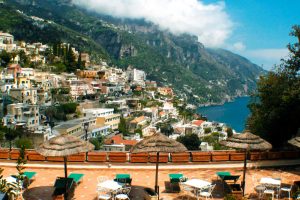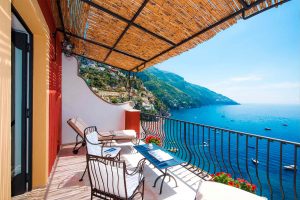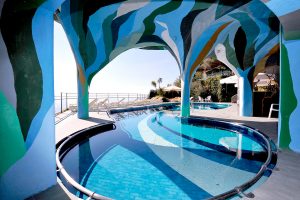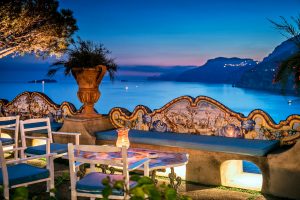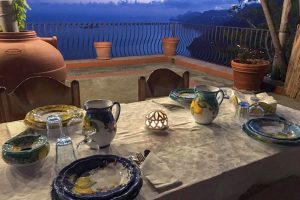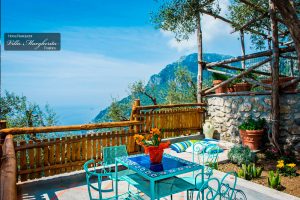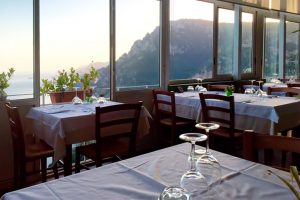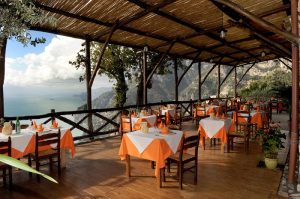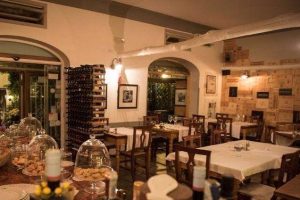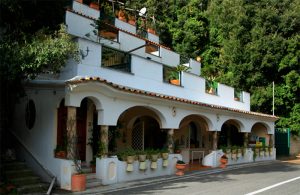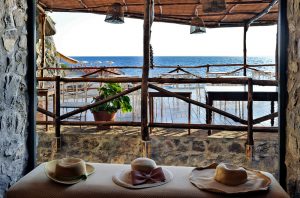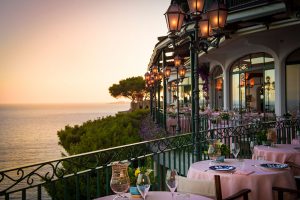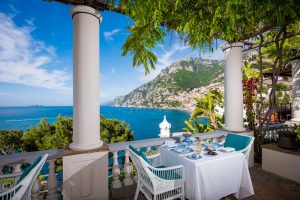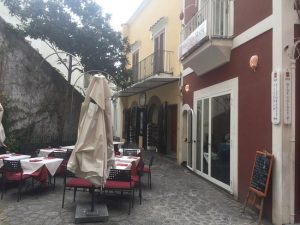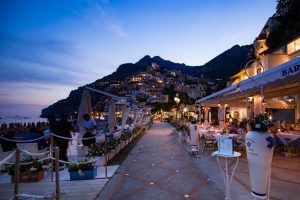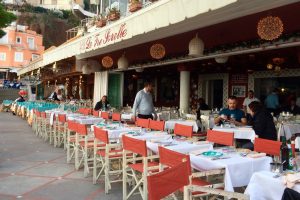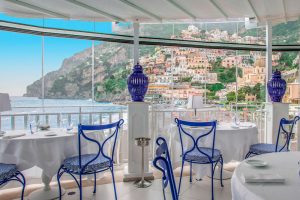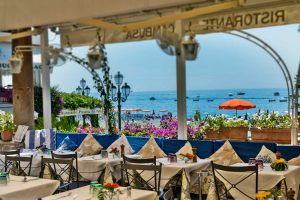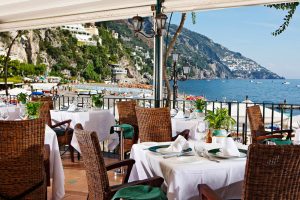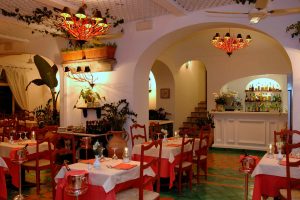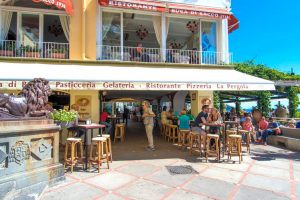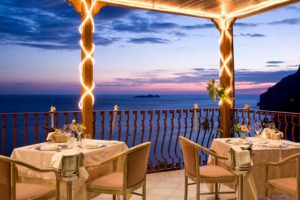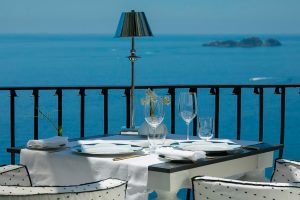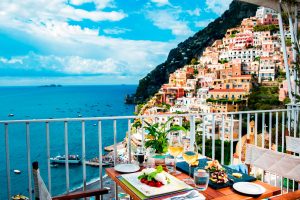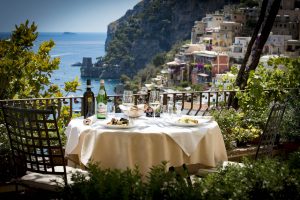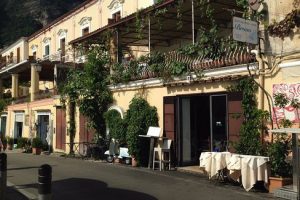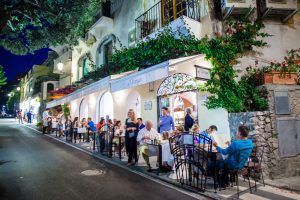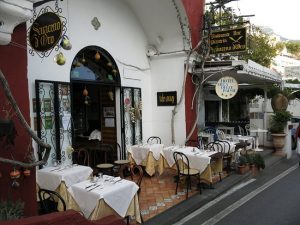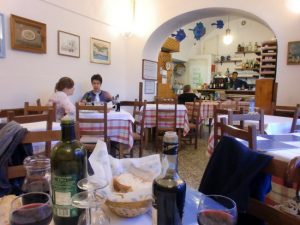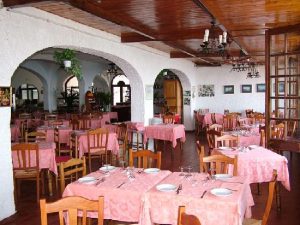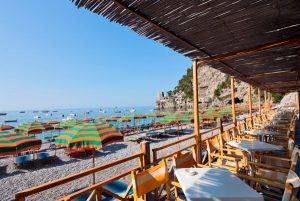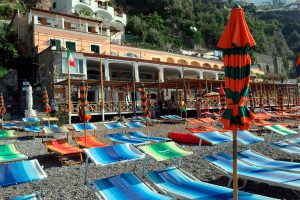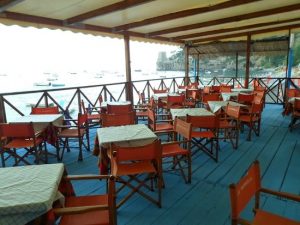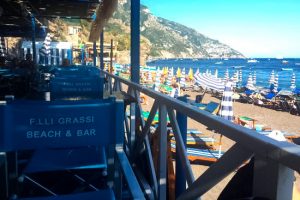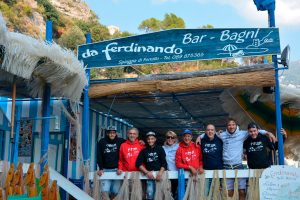“ROMANTIC PATH”
![]() Spiaggia Grande > Fornillo Beach
Spiaggia Grande > Fornillo Beach![]() 15 min.
15 min.
Positano can undoubtedly be considered a treasure trove of pure romanticism, with its marvelous views, its alleys and the numerous walks enriched by colorful bougainvilleas and the scent of lemons.
One of the most beautiful is certainly the one that from the Spiaggia Grande leads to the characteristic Fornillo Beach, a narrow road a few meters above sea level with views of Positano, Praiano and “Li Galli” archipelago.
But as often happens in this magical place, a new surprise hides behind the corner waiting to be discovered. Walking along the enchanted path, we come across a piece of history in Positano, that is two of the three ancient Saracen towers: the Trasita tower and Fornillo Tower, used in the 16th century as watchtowers for the attacks of the Arabs.
Both towers, as well as the third in the “Sponda” area and the numerous dislocated along the coast, are built on the most protruding “points” of the coast,in such a way as to be visible to each other and transmit beetween them signals in the event of Saracen attacks.
Trasita tower is the first which we come across the path, for that of Fornillo we must reach the homonym beach, a favorite place for those looking for a quieter and quieter place of Spiaggia Grande.
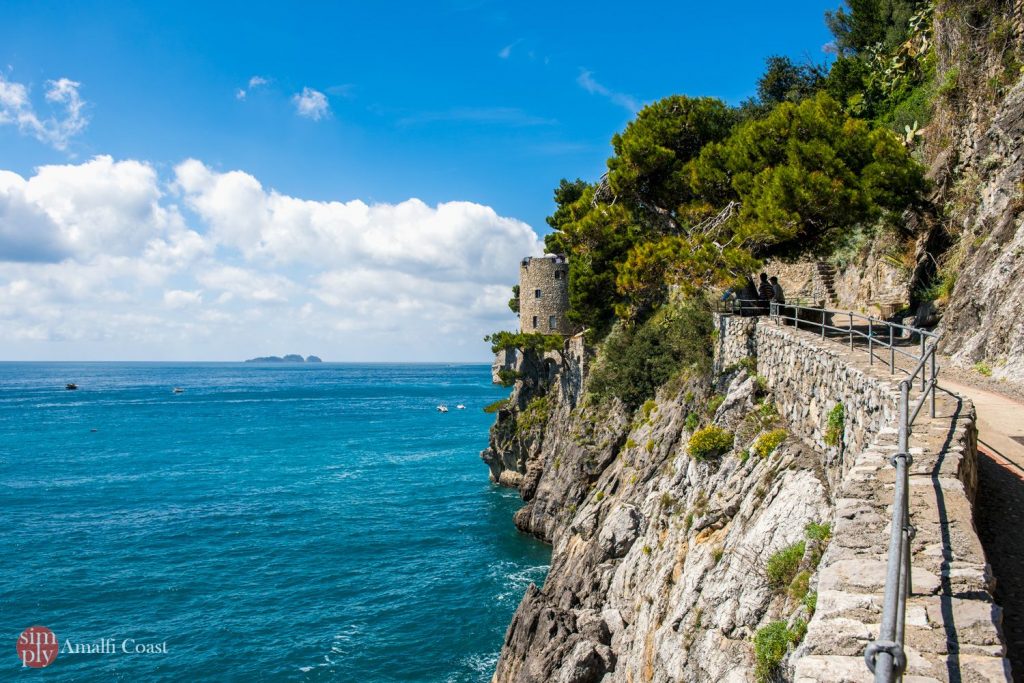
PATH OF GODS
![]() Bomerano > Nocelle
Bomerano > Nocelle![]() 4 hours
4 hours
The name is enough to suggest the beauty of this mountain path, but if it was not clear enough, the plaque affixed to its entrance to clarify the ideas:
“That road suspended over the magical gulf of the Sirens still furrowed today by memory and myth”.
According to Greek mythology, on the archipelago of Li Galli that the bewitching sirens lived and here Ulysses escaped their attempt to bewitch him; but it seems that the Gods, worried about his fate, decided to descend from Olympus and reach the three islands, going through this idyllic path first.
Myths apart, the reality is that just start the route to understand why it is called “divine”: the feeling is that of feeling suspended between sky and sea, immersed in a condition in which the territory fully shows its undoubted beauty, accompanied from a panorama that ranges from Praiano to Positano, from the “Li Galli” to the Faraglioni of Capri.
To better enjoy these views and tackle the route in the least tiring way, the advice is to start from Bomerano (fraction of Agerola from which the path begins) and descend to Nocelle, with a walk of about 4 hours.
Once in the higher village of Positano, you can take a staircase that leads to Arienzo, a neighborhood about 2 km from the center; or continue along the road that passes through the village of Montepertuso, on foot or with the local bus line Mobility Amalfi Coast that links both hamlets to Positano.
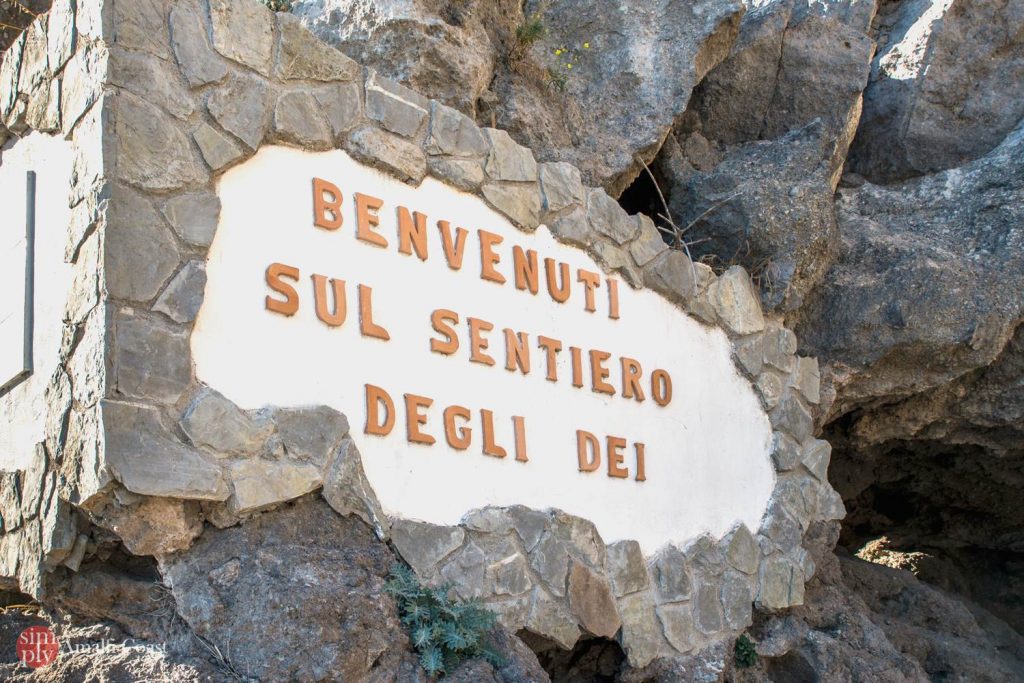
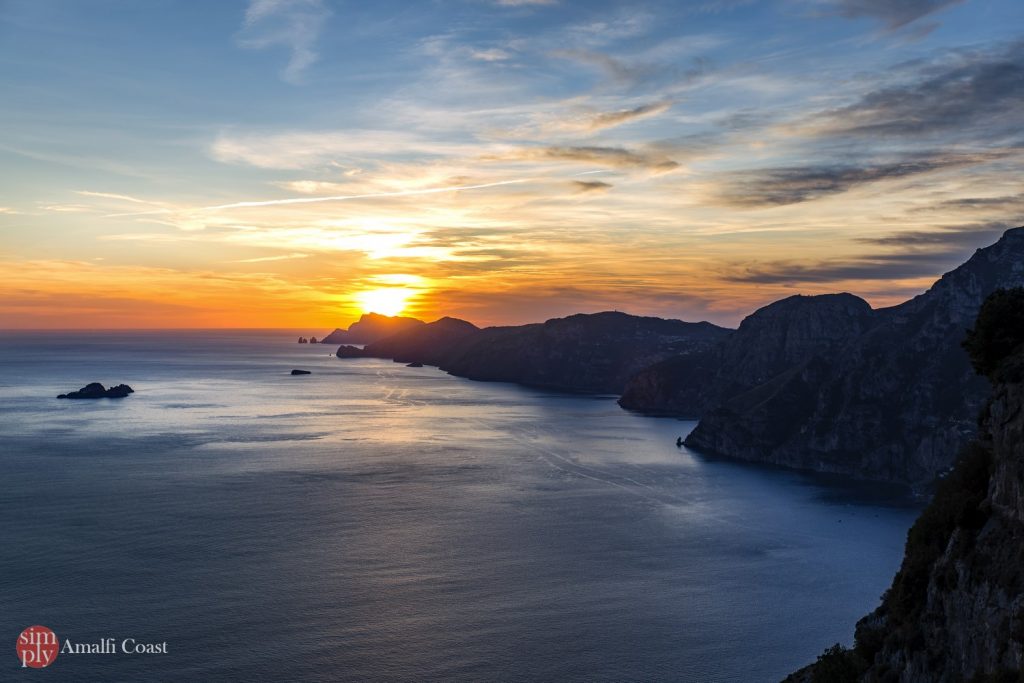
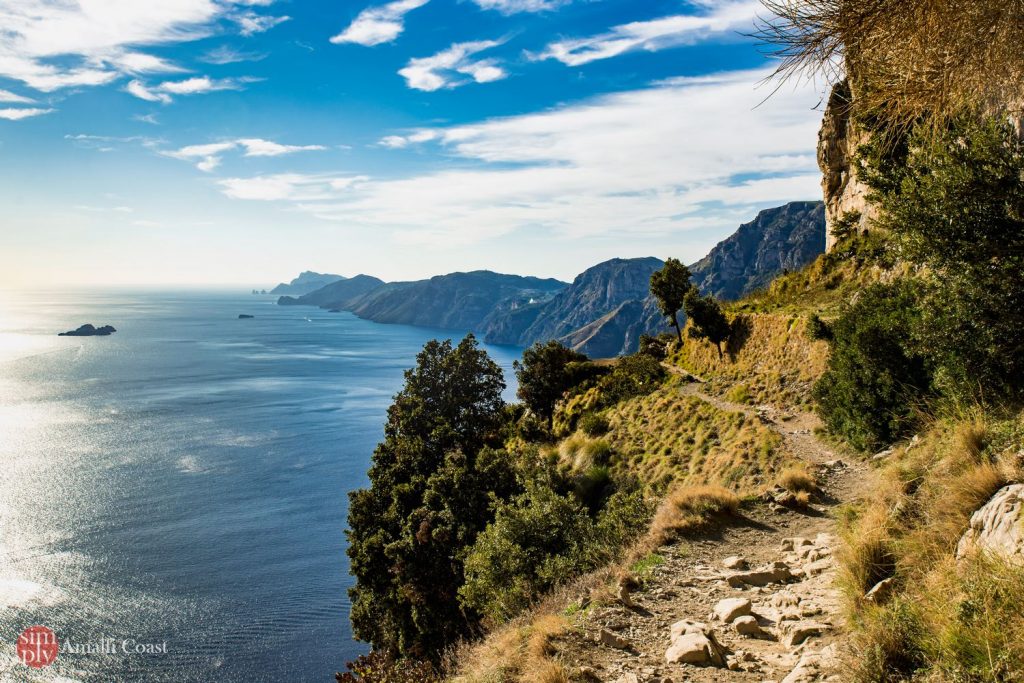
MAR POSITANO
MUSEO ARCHEOLOGICO ROMANO, SANTA MARIA ASSUNTA
![]() Piazza Flavio Gioia
Piazza Flavio Gioia
Protagonist of photographs and works by local artists, the Church of Santa Maria Assunta is located in the heart of the town of Positano, exhibiting its majestic majolica dome that further embellishes the landscape.
The history of the Church is linked to that of the Benedictine monastery of Santa Maria, founded in the second half of the century. X. Later the abbey was abandoned, and passed into the hands of several abbend knight commander, until the “new” at the hands of the last abbot in 1777 that gave rise to various works, leading the Church to become visible today.
Its interiors, rich in opulent gold ornaments, contain precious paintings and statues, among which the reliquary bust of San Vito, patron saint of the city and the Byzantine icon of the Virgin, set in the middle of the main altar. The bust, from the Neapolitan school, dates back to the 16th century, and is one of the most valuable works on the Amalfi Coast, with attention to details and probably built on a real model.
The bell tower of the Chiesa Madre, located on the same parvis, was instead rebuilt in 1707 by an unknown Capuchin friar, on it is a plaque that recalls Flavio Gioia and a medieval bassorielevo depicting the pistrice, marine monster symbol of the town of Positano.
And it is just passing behind the bell tower that literally opens up a new world: crossing the entrance to a museum that has all the flavor of a journey back in time. First we come across an austere medieval crypt, which seems to have been the place where liturgical activities took place before the construction of the Church and later became a cemetery (as demonstrated by the drafts along the entire apsidal perimeter).
Continuing to “dig” in the history of Positano, we find ourselves in front of a fascinating Villa Romana, a beauty buried by the eruption of Vesuvius in 1979. Its existence was already known since the early years of the ‘900, when a butcher, in digging a tunnel to store his meat, came across colors and objects that had all the flavor of another era.
Today this wonder is visible and can be visited, thanks to numerous and continuous restoration and research works that have put together the pieces of its history.
It is a classic Villa Marittima from the Roman period, of the same vein of the others located along the Amalfi Coast and the major islands, a real status of the most well-to-do sanatorium classes.
This, in particular, seems to belong to a freedman of the emperor Claudius: Posides Claudi Caesaris, from which the name of the town derives.
What emerged during the excavations left the archaeological breathless, confirming the importance of the site every day: the frescoes of the domus are almost completely intact, the rare and precious colors, the depictions rendered in perspective and treated in the smallest details.
Under the mantle of lapilli were found ancient columns, further fragments of fresco and a truly surprising number of everyday objects, until the arrival “on the ground” that brought to light the mosaic floor of the domus.
At the end of the excavation and restoration work, each object has found the right place within the path, a path that shows how literary overlapping of historical periods and cultures, in a journey that, “digging” in time, leads at the most beautiful and ancient corner of Positano.
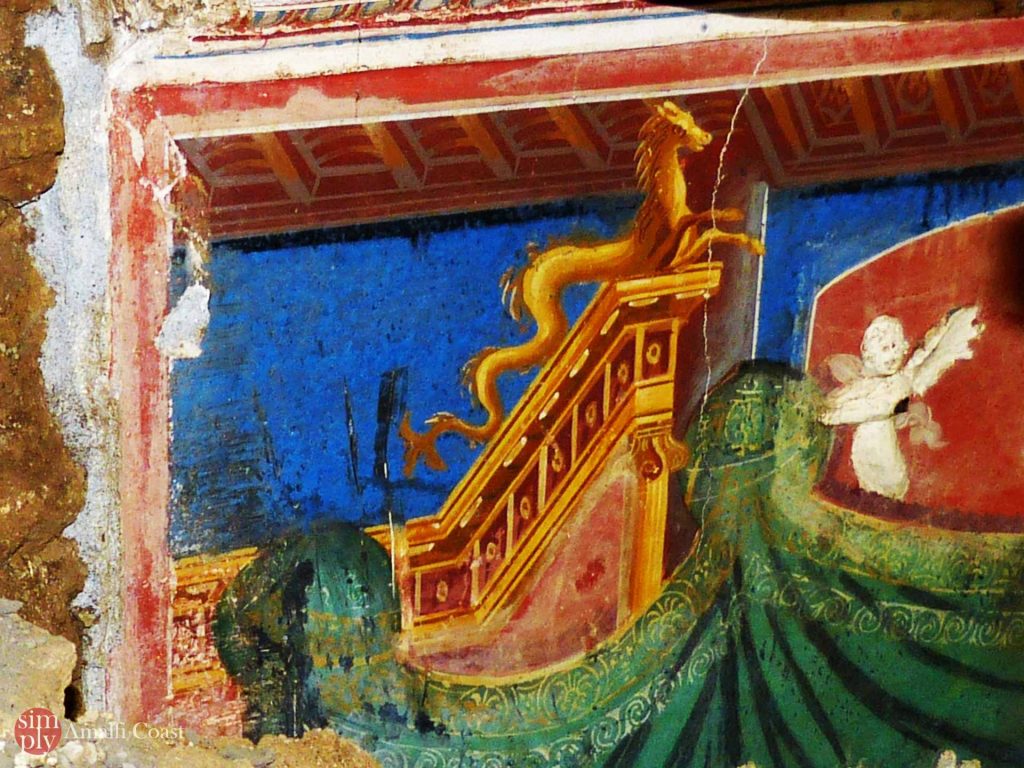
SHOPPING AND LOCAL PRODUCTS
You can’t leave Positano without taking away a souvenir, which coincides with bringing home a piece of tradition and history of this enchanting land.
The largest local production is certainly represented by Moda Positano, the colorful sea line full of floral prints, perforated fabrics and inserts of gems and corals.
An ageless fashion that has made the history of the town since the 50’s, dressing up internationally renowned faces such as Liz Taylor, Michelle Hunziker and Ivana Trump and becoming a stylistic icon all over the world.
To complete the outfit there are the precious “jeweled sandals” made to measure, which made the first lady Jacqueline Kennedy fall in love. The footwear is created by expert hands of craftsmen, made with fabrics and colors shown at the time and embellished with colored gems.
Another great tradition of the charming town is represented by the ceramic creations, finely crafted and painted by hand.
Finally, for those who want to savor the taste of this territory, the advice is to bring with him a bottle of refreshing limoncello, and taste the “lemon delight”, a typical dessert of the area where you can find all the scent and essence of the golden citrus.
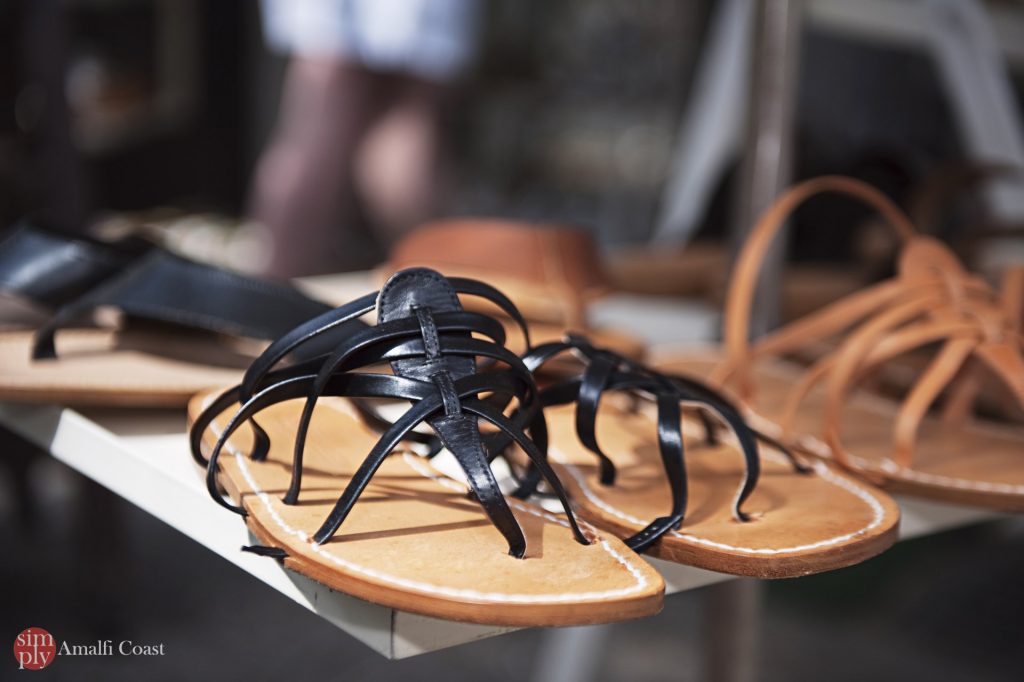
BOAT TOURS
Whether it has really been the residence of the sirens or not, Positano is still a place that enchants, which draws the eye to its pulsating heart and leaves a nostalgic memory inside.
And in order to better appreciate all its beauty, it is a must to enjoy it from the sea, through a tour that leads to the discovery of hidden bays, caves and legends.
From the sea, the town looks like a large colored basin, a framework in which the small houses, the green of the citrus groves and the numerous “stairways”, until they converge on the beach, on the imposing dome of the Chiesa Madre.
Leaving the image of the vertical city and continuing in both directions, the coast lets discover all its most hidden beauties, including small beaches accessible only by sea, natural arches and caves of which the sea is sculptures.
In addition to the possibility of crossing the entire coast to reach Amalfi or the areas of the Sorrento Peninsula, living Positano from the sea also means traveling the same way as Ulysses, approaching the enchanting archipelago of Li Galli: the three islets passed by the myth of the sirens to the mythical world of dance Léonide Massine and Rudolf Nureyev.
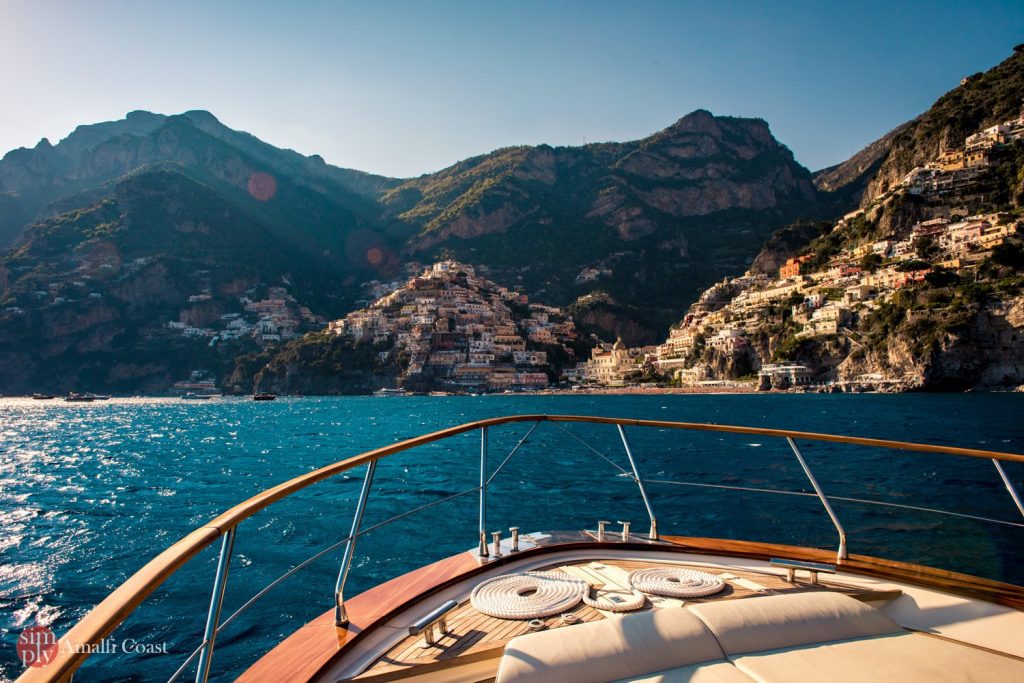
 Simply Amalfi Coast
Simply Amalfi Coast 

